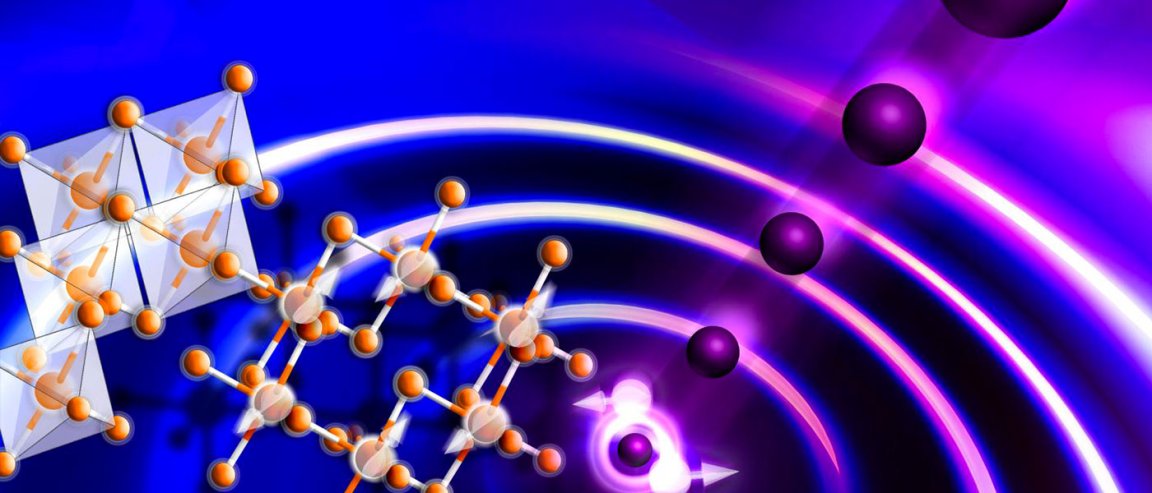
Quantum Spin Liquid
An international team of researchers found evidence of a mysterious new state of matter that causes electrons to break into pieces, something previously thought to be impossible. The state, known as quantum spin liquid, was first predicted more than 40 years ago. The observation of one of their most intriguing properties—electron splitting, or fractionalization—in real materials is a breakthrough.
In a typical magnetic material, the electrons each behave like tiny bar magnets, all pointing their magnetic poles in the same direction. But in a material containing a spin liquid state, the bar magnets would not align. Instead, they form a sort of entangled soup caused by quantum fluctuations.
The research team used neutron scattering techniques to look for any sort of evidence of this so-called entangled soup. They tested the magnetic properties of the RuCl3 crystals by illuminating them with neutrons, and observing the pattern of ripples that the neutrons produced on a screen.
A regular magnet would create distinct sharp spots, but it was a mystery what sort of pattern the Majorana fermions in a quantum spin liquid would make. These observations provided the first direct evidence of a quantum spin liquid and the fractionalization of electrons in a two dimensional material.
An Important Step

The Majorana fermions that result from this electron splitting could have some pretty incredible applications. They could be used as building blocks of quantum computers, which would be far faster than conventional computers and would be able to perform calculations that could not be done otherwise.
“It’s an important step for our understanding of quantum matter,” said Kovrizhin. “It’s fun to have another new quantum state that we’ve never seen before – it presents us with new possibilities to try new things.”